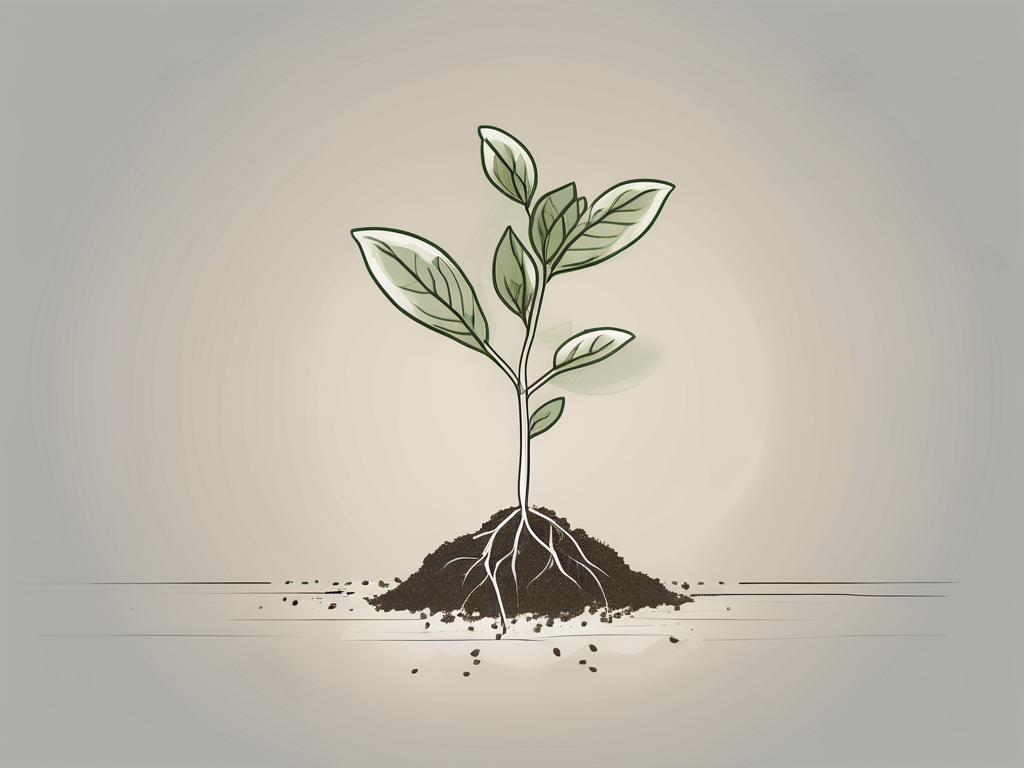
If you've ever admired the charming tendrils of a creeping fig, you might have thought about adding more of these lovely plants to your collection. The good news is that propagating creeping fig is both fun and rewarding, and you don’t need to be an expert gardener to succeed. This guide will take you through the steps to grow your own little green army of creeping figs.
We'll cover everything from choosing the right cuttings to understanding the best conditions for growth. By the end of this post, you'll be equipped with all the knowledge you need to propagate creeping fig with confidence. Let's get started!
Understanding Creeping Fig
Creeping fig, or Ficus pumila, is a beautiful climbing plant known for its rapid growth and ability to cover walls and fences. It's often used in interior design to create lush green backdrops. But before we jump into propagation, it’s essential to understand what makes this plant tick.
This plant is native to East Asia and thrives in warm, humid environments. It’s a versatile plant that can grow both indoors and outdoors, making it a favorite among plant lovers. Its small, heart-shaped leaves and ability to climb make it a stunning addition to any space, whether draping over a pot or clinging to a wall.
Understanding its natural habitat helps us mimic those conditions at home, ensuring successful propagation. Creeping fig prefers bright, indirect sunlight and well-draining soil. It’s also essential to keep the plant consistently moist but not waterlogged. With these basics in mind, let’s move on to the propagation process.
Gathering Your Supplies
Like any good project, propagating creeping fig starts with gathering the right tools and materials. Here’s what you’ll need:
- Pruning shears: Make sure they’re sharp and clean to prevent any potential damage or disease spread.
- Small pots: Choose ones with drainage holes to ensure excess water can escape.
- Potting mix: A well-draining mix is crucial. You can use a standard potting mix with added perlite or sand for better drainage.
- Rooting hormone (optional): This can boost your success rate, but it’s not strictly necessary.
- Plastic bags or a propagation dome: These will help maintain humidity around the cuttings.
- Watering can or spray bottle: To keep your cuttings hydrated.
Once you've assembled your supplies, you’re ready to take the next step: selecting the right cuttings.
Choosing the Right Cuttings
When it comes to propagation, the health of your cutting is crucial. You want to choose a healthy stem that’s about 4-6 inches long. Look for stems with a few leaves and, ideally, some visible nodes. Nodes are those small bumps along the stem where leaves and roots can grow.
Here’s a simple way to identify a suitable cutting:
- Look for a stem that’s neither too young nor too old. Young stems might not have developed enough, while older stems could be woody and slow to root.
- Choose a stem with vibrant, healthy leaves. Avoid any that look wilted or discolored.
- Ensure there are several nodes along the stem, as these are potential rooting points.
Once you’ve found the perfect cutting, it’s time to get snipping.
Taking Cuttings from the Mother Plant
Armed with your pruning shears, you’re ready to take your cutting. Follow these steps:
- Identify the spot: Choose a section of the stem that’s healthy and has at least a couple of nodes.
- Make the cut: Use your shears to cut just below a node. This is where new roots are most likely to form.
- Remove extra leaves: Trim off the leaves from the lower part of the cutting, leaving a few at the top. This reduces water loss and encourages root growth.
Now that you’ve got your cutting, it’s time to move on to the next stage: encouraging those roots to grow.
Preparing the Cuttings for Propagation
Before planting your cutting, there are a few more steps that can help ensure success:
- Optional - Dip in rooting hormone: If you have rooting hormone, dip the cut end of the stem into it. This can speed up the rooting process and increase the chance of success.
- Prepare the pot: Fill your pot with the well-draining potting mix. Moisten the soil slightly before planting.
- Plant the cutting: Make a small hole in the soil with your finger or a pencil and gently insert the cutting. Firm the soil around the base to support the cutting.
With your cutting planted, it’s time to create the perfect environment for it to thrive.
Creating the Ideal Environment
Creeping figs need a bit of extra care at the beginning to get those roots growing. Here’s how you can help:
- Humidity: Place a plastic bag over the pot or use a propagation dome to maintain high humidity. This mimics the plant’s natural environment and encourages root development.
- Light: Position the pot in a spot with bright, indirect sunlight. Direct sunlight can be too harsh and dry out the cutting.
- Temperature: Aim for a warm spot that’s consistently between 65-75°F (18-24°C), which is ideal for root growth.
Check the soil regularly to ensure it stays moist. If it dries out, give it a gentle spray with water. Now, it’s time to be patient and let nature do its thing.
Caring for Your New Plants
Once your cuttings start to show signs of new growth, it’s time to transition them into full-fledged plants. Here’s what you need to do:
- Remove the humidity cover: Gradually acclimate your new plants to normal room conditions by removing the plastic bag or dome for a few hours each day.
- Watering: Keep the soil consistently moist but not soggy. Overwatering can lead to root rot, so it’s better to err on the side of caution.
- Light: Continue to provide bright, indirect light. As the plant establishes, it can handle more light, but avoid harsh, direct sunlight.
- Feeding: Once the plant is more established, consider using a balanced, water-soluble fertilizer once a month during the growing season (spring and summer).
With a bit of care and attention, your new creeping figs will start to thrive, adding a touch of greenery to your home.
Common Problems and Solutions
Even with the best care, sometimes things don’t go as planned. Here are a few common issues you might encounter and how to tackle them:
- Cuttings not rooting: If you find your cuttings aren’t rooting, check the humidity and temperature. If they’re too low, the cuttings may struggle.
- Leaves turning yellow: Yellowing leaves can be a sign of overwatering. Ensure the pot has good drainage and adjust your watering schedule.
- Pests: Keep an eye out for common pests like spider mites and aphids. Wipe the leaves with a damp cloth or use a gentle insecticidal soap if needed.
Remember, every plant has its quirks, and sometimes it takes a little trial and error to get things just right.
When to Transplant
Once your creeping fig has established a robust root system and is showing healthy new growth, it’s time to think about transplanting. Here’s how to do it:
- Choose a larger pot: Pick a pot that’s slightly larger than the current one, with good drainage holes.
- Prepare the pot: Fill it with fresh potting mix, ensuring it’s well-draining. You might want to add some perlite or sand for extra drainage.
- Transplant carefully: Gently remove the plant from its current pot. If it’s sticking, run a knife around the edge to loosen it. Place it in the new pot and fill in around it with soil.
After transplanting, water the plant lightly and place it back in its usual spot. Give it a bit of time to adjust to its new home.
Using Creeping Fig in Interior Design
Creeping fig isn’t just a plant; it’s a design element. Here are some creative ways to incorporate it into your home decor:
- Green walls: Let the creeping fig climb up a trellis or wall indoors to create a stunning green backdrop.
- Hanging baskets: Use hanging baskets to allow the vines to cascade down, adding a touch of greenery to any room.
- Tabletop decor: Place smaller pots of creeping fig on tables or shelves for a subtle, elegant touch.
Not only does creeping fig add beauty, but it also brings a sense of calm and nature into your living space.
Final Thoughts
By now, you should feel ready to propagate your own creeping fig plants. We've covered everything from choosing cuttings to creating the ideal growth environment. With a little patience and care, you'll soon have a thriving collection of these charming plants.
Here at Cafe Planta, we’re always excited to help you on your plant journey. Whether you’re looking for unique houseplants or need advice on plant care, we’re here to support you. Feel free to email us or reach out on Instagram. Let's connect and share the joy of plant care together!












